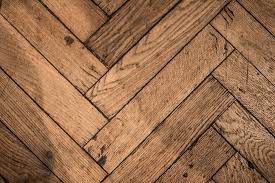
Parquet Prestige: Unraveling the World of Parquet Flooring
When it comes to adding value to your property, parquet flooring is a beautiful and practical choice. Its timeless look can instantly elevate the aesthetics of your space while its durability ensures that it lasts for years. Among the various types of parquet flooring, herringbone has become a popular choice for homeowners. In this blog post, we’ll discuss what herringbone is, why it’s so popular, and how to properly maintain it.
What is Herringbone Flooring?
parquet flooring is a type of parquet flooring that uses rectangular blocks to form a zigzag pattern. It can be made using different materials such as oak, walnut, bamboo, and even ceramic tiles. When installed, the herringbone floor creates a stunning design feature in any room. It’s also a versatile design choice that suits both traditional and modern interiors.
Why is Herringbone Flooring so Popular?
One of the reasons why herringbone flooring is so popular is its durability. This type of parquet flooring is made from thick hardwood blocks, making it resistant to wear and tear, scratches, and heavy foot traffic. It’s also easy to clean and maintain, which makes it a practical choice for homes with kids and pets. Additionally, herringbone flooring has a unique texture and design that can add a touch of sophistication to any room. It’s a classic choice that can easily match any décor style.
Installation Tips for Herringbone Flooring
Installing herringbone flooring requires a level of expertise that only professional installers can provide. If you’re planning to install it yourself, make sure to follow these tips:
Prepare the subfloor – Herringbone flooring needs a level surface to ensure that the blocks fit perfectly. Make sure to prepare the subfloor by leveling it and cleaning any debris.
Layout the blocks – Before installation, lay out the blocks to create the desired pattern. This will help you determine the amount of material you need and avoid any mistakes during installation.
Use a high-quality adhesive – Herringbone flooring requires a strong adhesive to keep the blocks in place. Make sure to use a high-quality adhesive that’s compatible with the material you’re using.
Leave room for expansion – Herringbone flooring contracts and expands depending on temperature and humidity. Make sure to leave a small gap between the blocks to allow for this.
How to Maintain Herringbone Flooring
Proper maintenance is key to keeping herringbone flooring looking beautiful for years. Here are some tips:
Sweep and vacuum regularly – Herringbone flooring can easily accumulate dirt and debris. Make sure to sweep or vacuum it regularly to prevent scratches and discoloration.
Use a damp mop – Herringbone flooring can get damaged from excess moisture. When mopping, make sure to use a damp mop and avoid excessive water.
Use cleaning products that won’t damage the finish – Avoid using harsh cleaning products that can strip the finish of the herringbone flooring. Instead, use gentle cleaners that are suitable for use on hardwood floors.
short:
Herringbone flooring is a beautiful and practical choice for any home. Its unique pattern, durability, and ease of maintenance make it a popular option for homeowners. Whether you’re planning to install it yourself or hire a professional installer, following these tips can help ensure that your herringbone flooring stays beautiful for years.